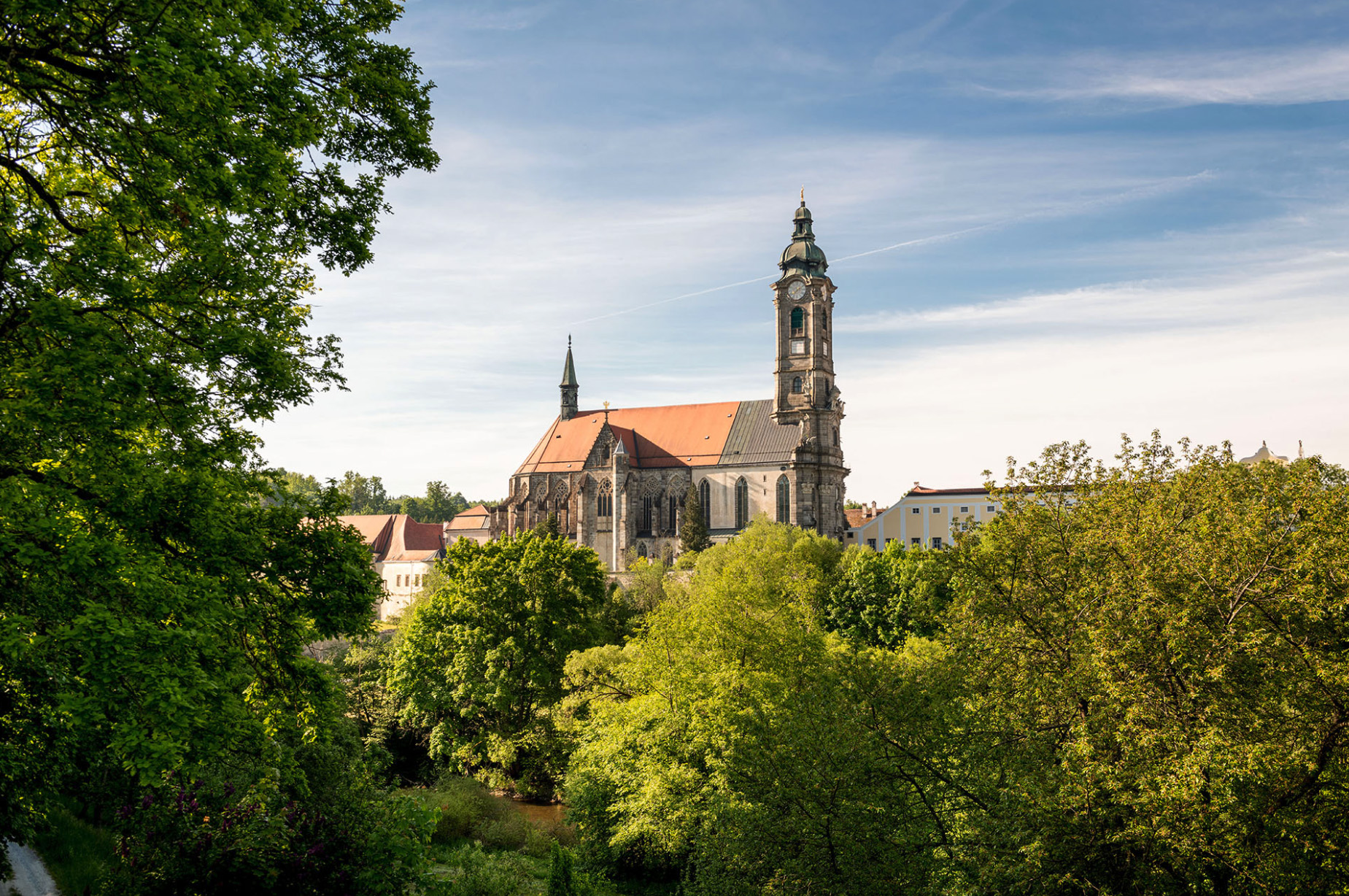cisterscapes
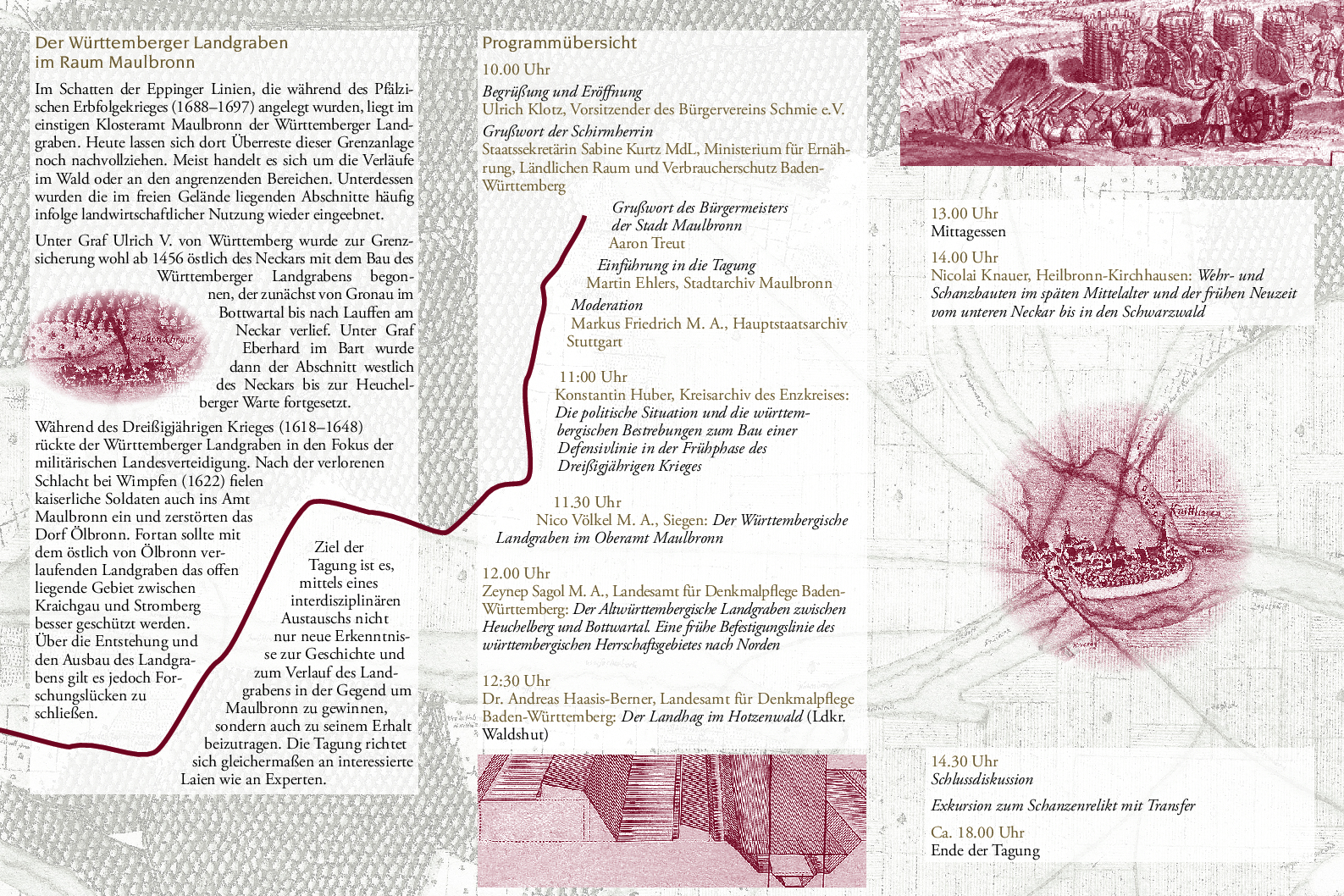
Maulbronn: Conference “The Württemberger Landgraben in the Maulbronn area”
Schmie gymnasium Glaitstrasse39, MaulbronnConference in cooperation with the citizens' association Schmie e.V. (part of Maulbronn) on the Württemberger Landgraben. This moat cut through the Maulbronn monastery landscape and is one of the early changes in the former cultural landscape of the Cistercians that can still be seen today. Due to its good fortifications, Maulbronn itself was also considered an important strategic point for national defense from the Middle Ages onwards. The aim of the conference is not only to gain new insights into the history and course of the moat in the area around Maulbronn by means of an interdisciplinary exchange, but also to contribute to its preservation. The conference is aimed equally at interested laypeople and experts. Registration deadline: October 2, 2024
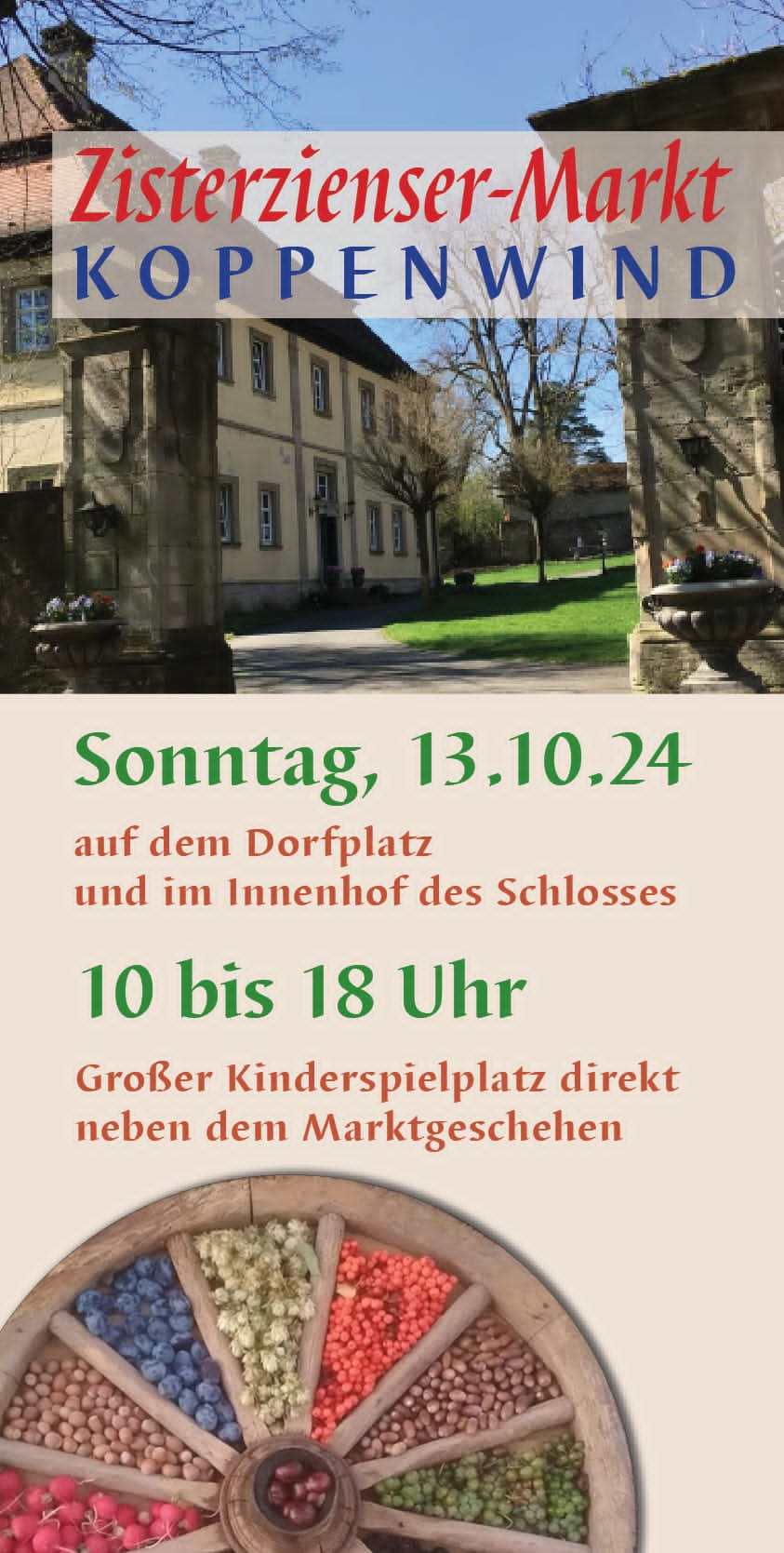
Koppenwind: Cistercian market
Koppenwind Castle Rauhenebrach, DeutschlandCistercian market on the village square and in the inner courtyard of the castle. Large children's playground right next to the market. Pony rides for the children. Visitors can expect around 35 market stalls with all kinds of goodies and useful items. Monastery products, Cistercian beer on tap, large coffee bar with homemade cakes, tarts and hat doughnuts and much more.
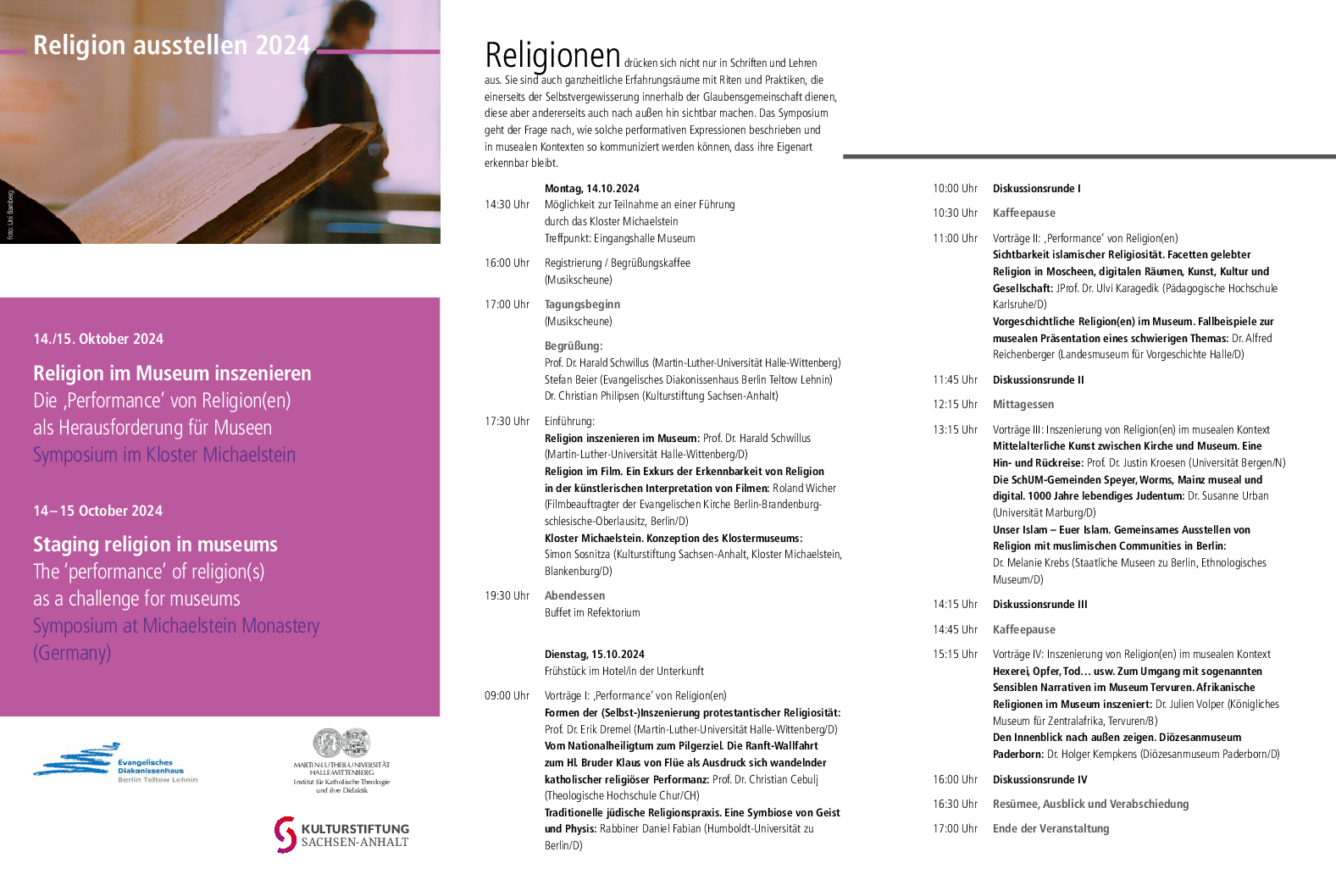
Michaelstein Monastery: “Exhibiting religion 2024”
Lecture series "Exhibiting religion" Religions are not only expressed in scriptures and teachings. They are also holistic spaces of experience with rites and practices that on the one hand serve self-assurance within the religious community, but on the other hand also make it visible to the outside world. The symposium explores the question of how such performative expressions can be described and communicated in museum contexts in such a way that their uniqueness remains recognizable. Due to high demand, the event "Exhibiting Religion" (14./15.10.2024) will be offered in a hybrid format, register directly via the "Register to participate online" button. https://www.frh-europe.org/frh-masterclass-staging-religion-in-museums-the-performance-of-religions-as-a-challenge-for-museums/
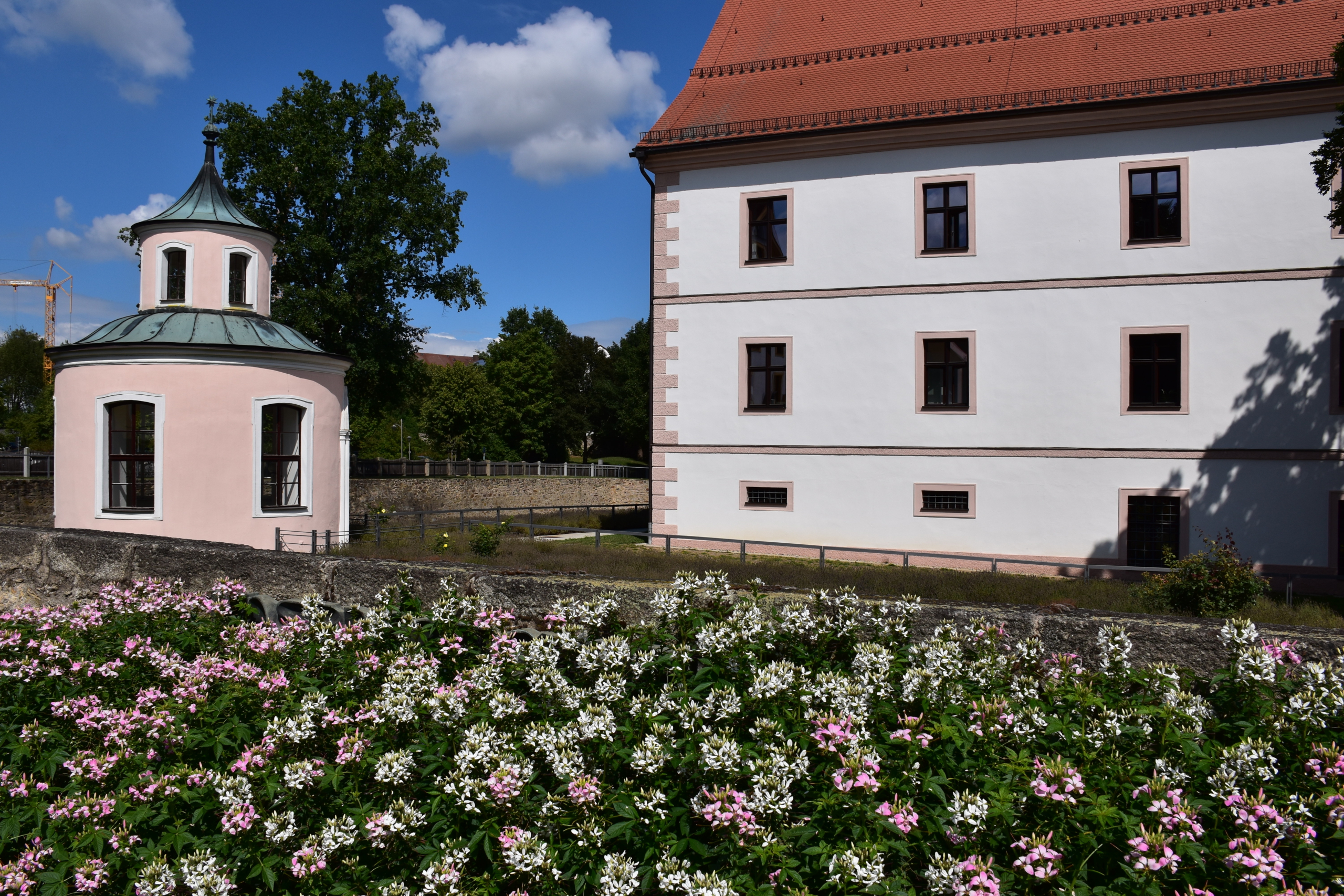
European cultural heritage staged
Waldsassen MonasteryFrom October 17 - 19, 2024, the awarding of the European Heritage Label will be celebrated in Waldsassen with an impressive light show. The heritage of the Cistercians is staged on a huge water screen around the monastery complex and their buildings shine in a special light. In addition to this illumination (from 19:00 - 22:00), guided tours of the monastery landscape around Waldsassen are offered on all days. You can find the program here: EKS celebration program If you would like to follow the Cistercians and Cistercian nuns in the Stiftland region in culinary terms, you can find information here: culinary heritage The district's museum department "das zwoelfer" has created a podcast series that provides insights into the diverse culture of the Stiftland region: Podcasts "Please do not touch"
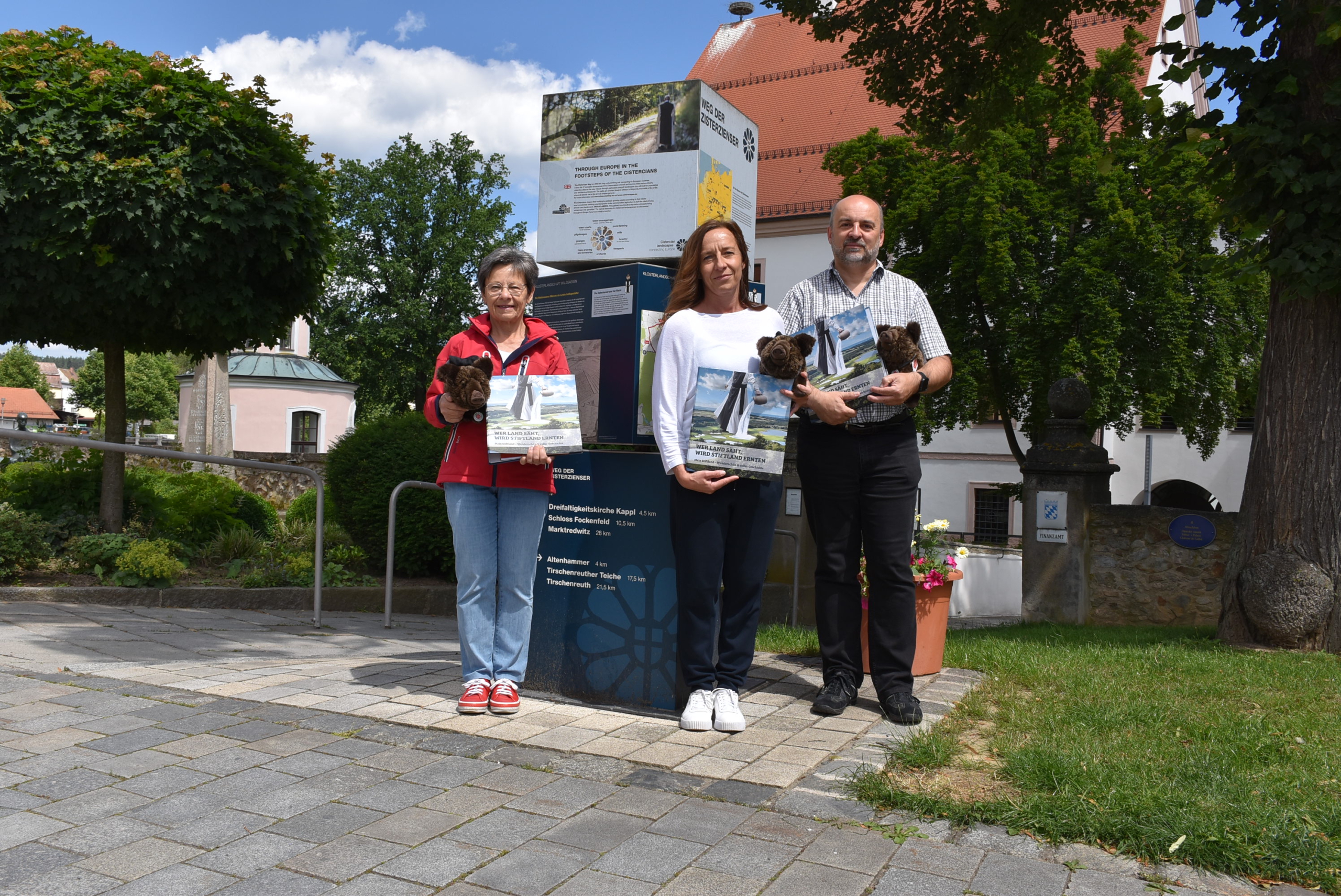
Monastery landscape tours October 2024
Waldsassen MonasteryIf you would like to explore the monastery and cultural landscape of the Stiftland, you are cordially invited to join one of the three guided tours through the monastery town of Waldsassen or the Stiftland with our monastery landscape guides. Thursday, 17.10.2024, 15.00: (Almost) along the monastery wall - monastery landscape in the monastery town (Michaela Müller; approx. 2h, distance approx. 2.5 km) Friday, 18.10.2024, 15.00: Experience the monastery landscape in the monastery town (Gabriele Achmann; approx. 2h, route approx. 1.5 km) Saturday, 19.10.2024, 1.30 pm: Guided tour of the monastery landscape with baroque highlights (Michael Rückl; approx. 4h 30 min, distance approx. 10 km) The meeting point for the guided tours is at the Diepoldbrunnen fountain in front of the collegiate basilica. Due to limited places on the guided tours, please register by email to martina.zanner@ikomstiftland.de or by telephone on 09632 9247349 by October 11, 2024.
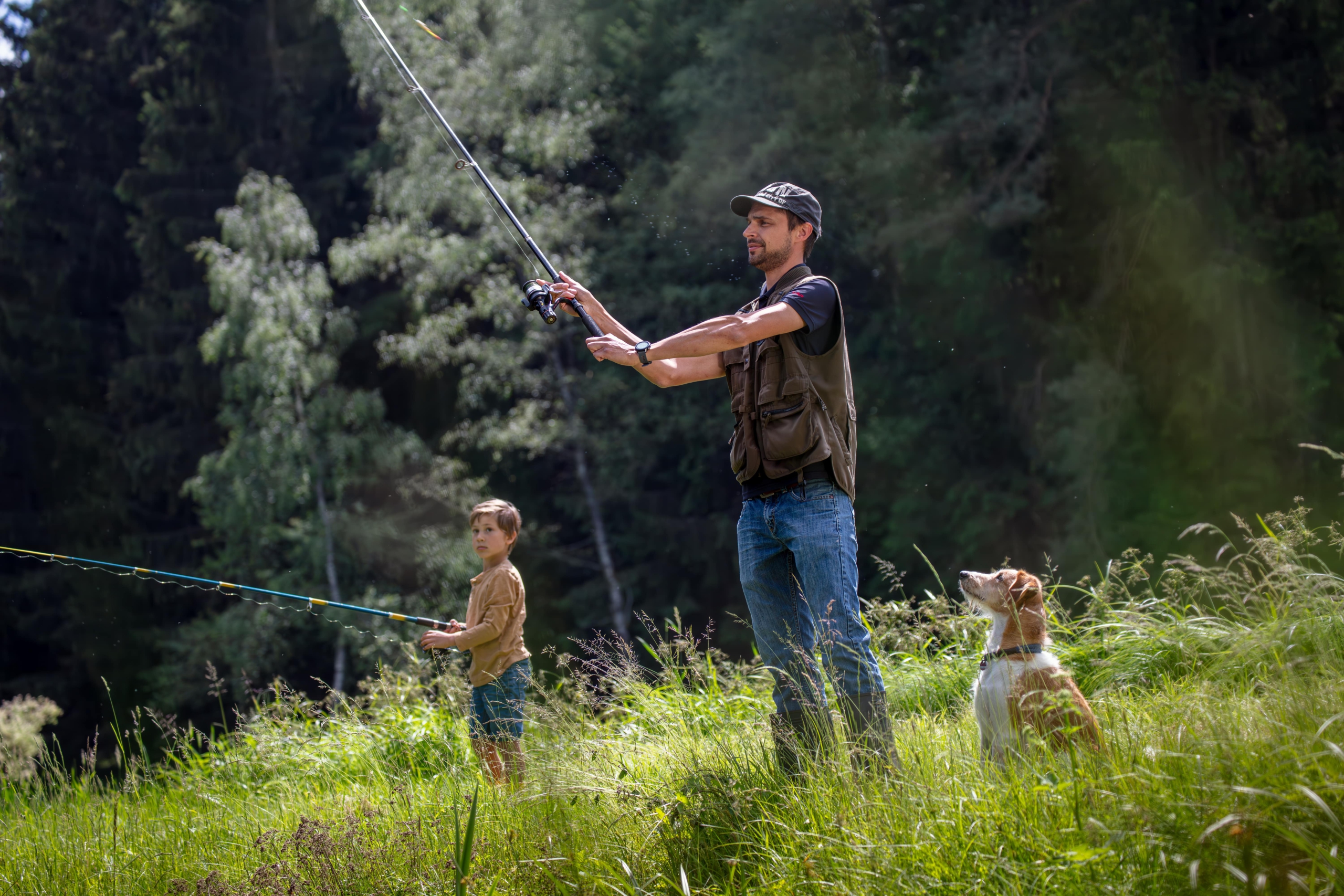
Lecture: Cistercians as organic pioneers?
Waldsassen MonasteryWednesday, 15.01.2025; 19.00 hrs; Kunsthaus Waldsassen Speakers: Antje Grüner, IKom Stiftland | Project Manager Öko-Modellregion; Martina Zanner, IKom Stiftland | Project Manager European Heritage Label Cistercian Monastery and Cultural Landscape in Stiftland Sustainability and respect for nature have not only been an issue since the increasing awareness of climate change. Industrial progress and the belief that we can control the forces of nature have made us forget that centuries ago, success was only possible by adapting to the natural environment. This can be illustrated by the example of the Cistercians, who still shape Europe today with the cultural landscapes they created. One of their recipes for success was to take into account the geological and climatic conditions at the monastery site. Please register at: antje.gruener@ikomstiftland.de or 09635 9240-467
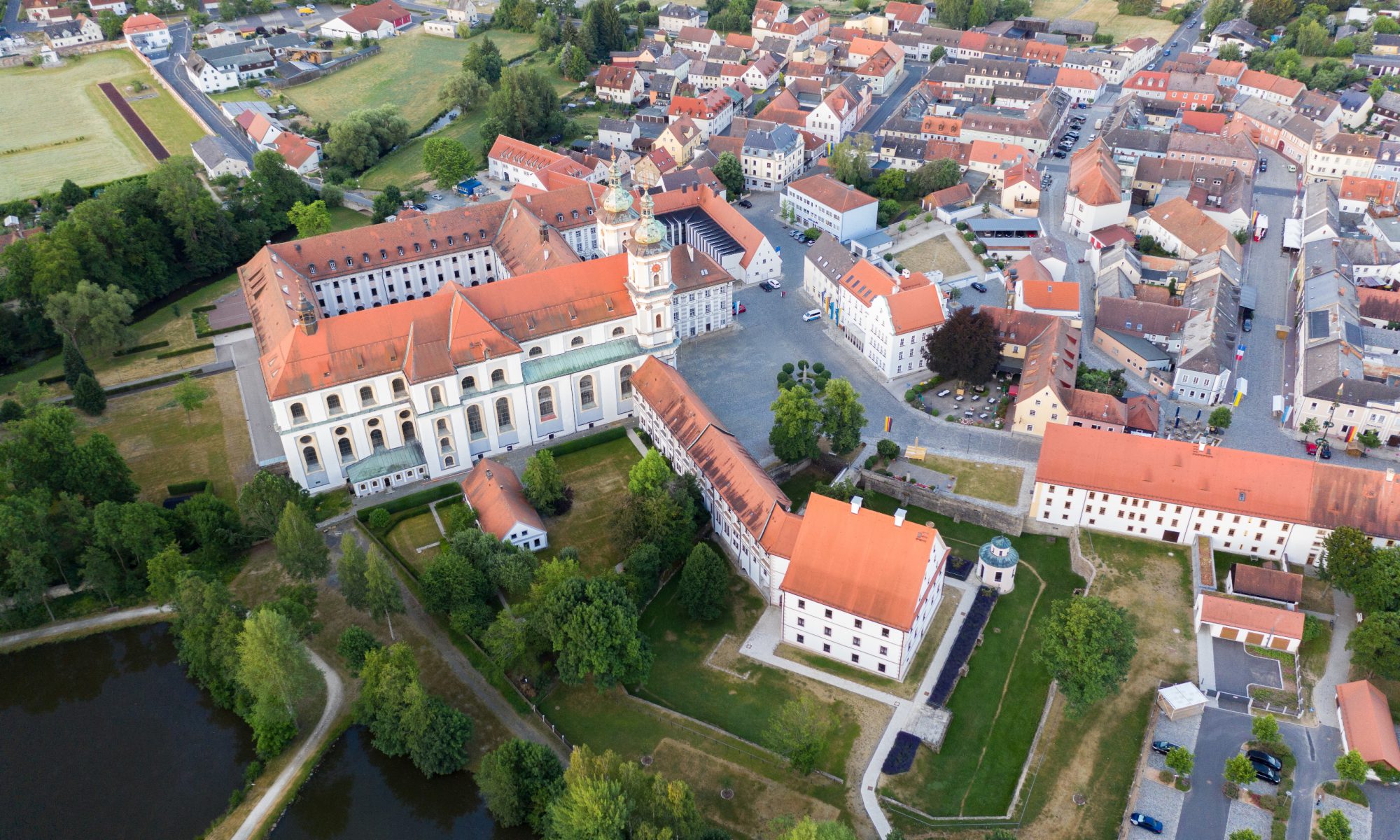
Waldsassen: Film screenings with lecture “Cisterscapes” – landscape film
Girls' secondary school of the Cistercian nuns Waldsassen - AULA Basilica Square 2, WaldsassenFilm screenings "Cisterscapes" Landscape film with lecture by Stefan Wolters on 23.01.25 in the girls' secondary school of the Cistercian nuns in Waldsassen. Mornings: 10:45 - 12:45 for pupils as part of lessons, auditorium of the girls' secondary school. Evenings: from 19:00 for parents, friends of the secondary school and interested visitors, auditorium of the girls' secondary school. Admission free.
Oberschwappach Castle: Notenlos – The top-class request concert!
Oberschwappach Castle Schlossstrasse 6, Oberschwappach, DeutschlandNo notes: The wish concert in a class of its own! Start: 19:00 Admission: 18:00 Tickets online via ok-ticket Pusch & Speckmann perform the "Living Jukebox" and present a top-class request concert that you've never heard before - and that sounds different every time. Depending on the mood and creativity of the guests! They not only take part live, but also actively shape the evening. In duets and duels, the two exceptional musicians improvise their way through classical, jazz, musical and pop music. Without playback, without aids and without sheet music, they push themselves and their pianos to the limit. For example, when they want to put a certain theme into the mouths of all possible and impossible interpreters, including their characteristic expressions. This is how children's songs meet film music, choral music meets rock 'n roll, Grönemeyer meets Pavarotti. Further information: https://www.notenlos.de/
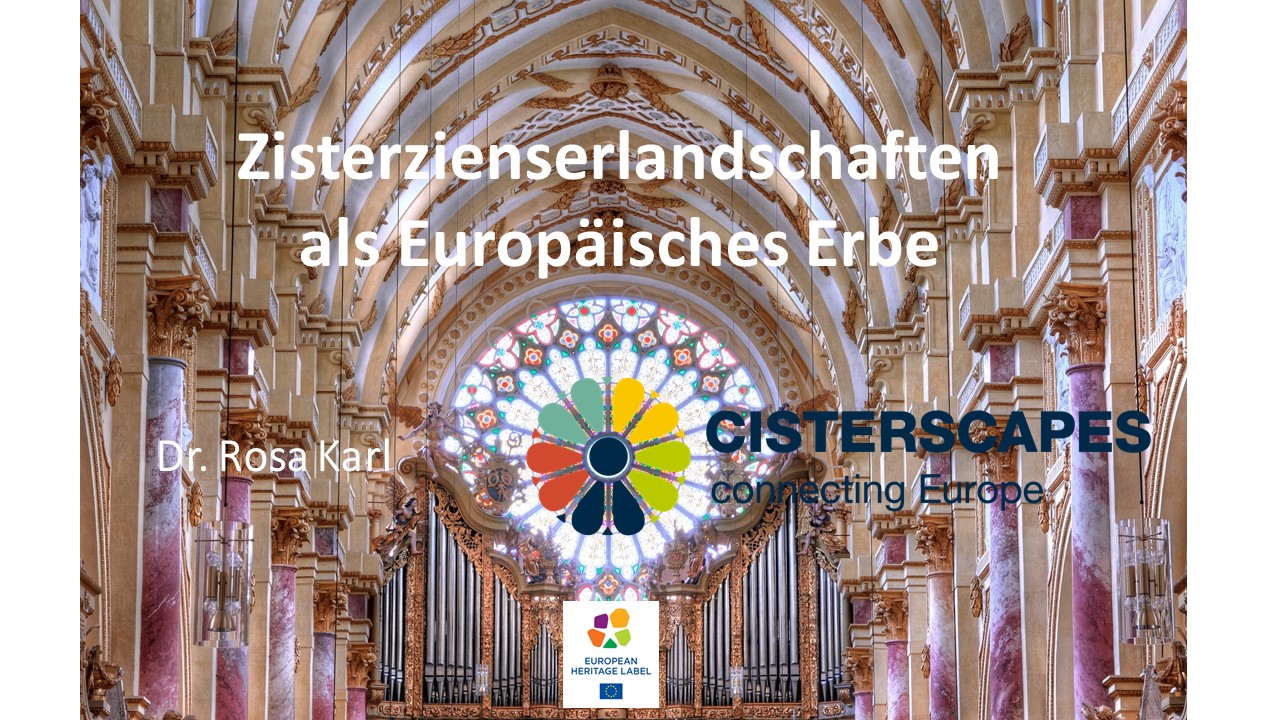
Cistercian landscapes as European heritage – online lecture
Cistercian landscapes as European heritage Within decades, the Cistercian reform order spread throughout Europe in the High Middle Ages. They shaped their own type of cultural landscape: the Cistercian landscape. Such Cistercian landscapes can be found all over Europe. 17 former Cistercian abbeys from five countries have been jointly awarded the European Heritage Label as Cisterscapes - Cistercian landscapes connecting Europe - 2024. The lecture will explain why and for what this revival of a historical network has received the award and what cultural activities Cisterscapes will be initiating in the coming years. The cultural heritage network is coordinated by the district of Bamberg. Ebrach, the oldest cistercy on the right bank of the Rhine, is located here. The once rich and powerful abbey in the Steigerwald is an important milestone in the spread of the Order to the East Franconian-German Empire and beyond. The lecture introduces us to the phenomenon of the Cistercian landscape then and now. Speaker: Dr. Rosa Karl, Cisterscapes - connecting Europe!, project management Ebrach individual site Online lecture. You will receive the link when you register.
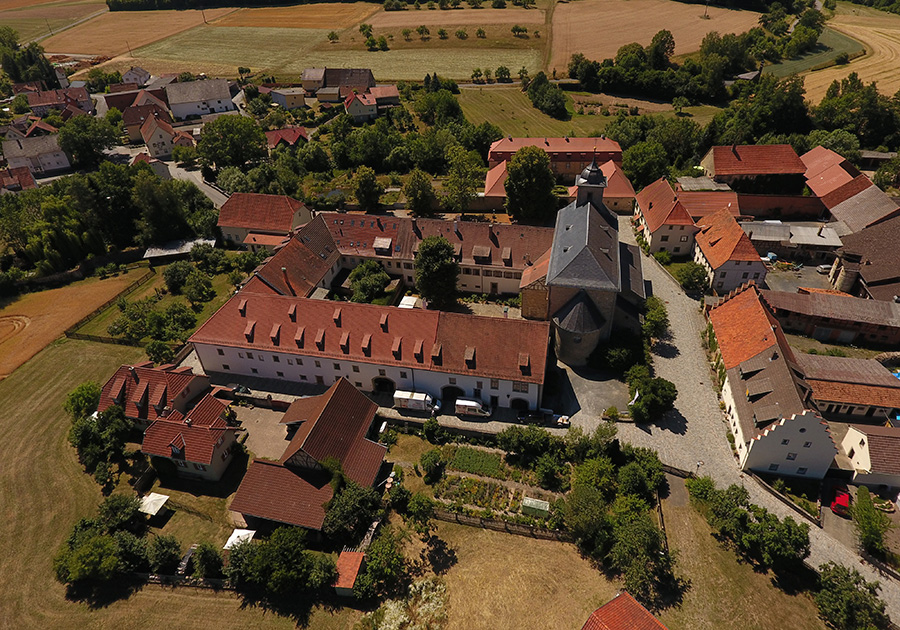
Wechterswinkel Monastery: Exhibition Kloster erLEBEN – Women’s lives in the Middle Ages
In the Middle Ages, the vast majority of the population lived in the countryside. Women carried out a variety of tasks in addition to the strenuous work in the fields: They prepared the daily meals, washed clothes, hauled water and made clothes for their families. The only way to escape the grueling cycle of childbearing and hard physical labor was to live in a monastery. It was only in the flourishing cities of the late Middle Ages that new opportunities opened up for women. Women were successful in trade, they worked in many trades, ran merchant stores or sold their products. The economic development of the cities had a lasting effect on the position of women. The exhibition highlights the different roles of women in the Middle Ages. The many tasks that women had to perform are vividly illustrated, from basket weaving to feather grinding, from gathering herbs to brewing beer . The exhibition "Women's lives in the Middle Ages" was conceived by the art historian Dr. Alice Selinger, Dreieich. Saturday, 15.03.2025 to Sunday, 22.06.2025 EXHIBITION The exhibition is complemented by an accompanying program for different age groups . Further information will be available from March at www.kloster-wechterswinkel- kultur.de and in the Rhön-Grabfeld cultural calendar. Wednesday - Sunday and public holidays from 13:00 - 17:00. Wechterswinkel MonasteryUm den Bau 6, Wechterswinkel, Bastheim, 97654 Bastheim OT Wechterswinkel
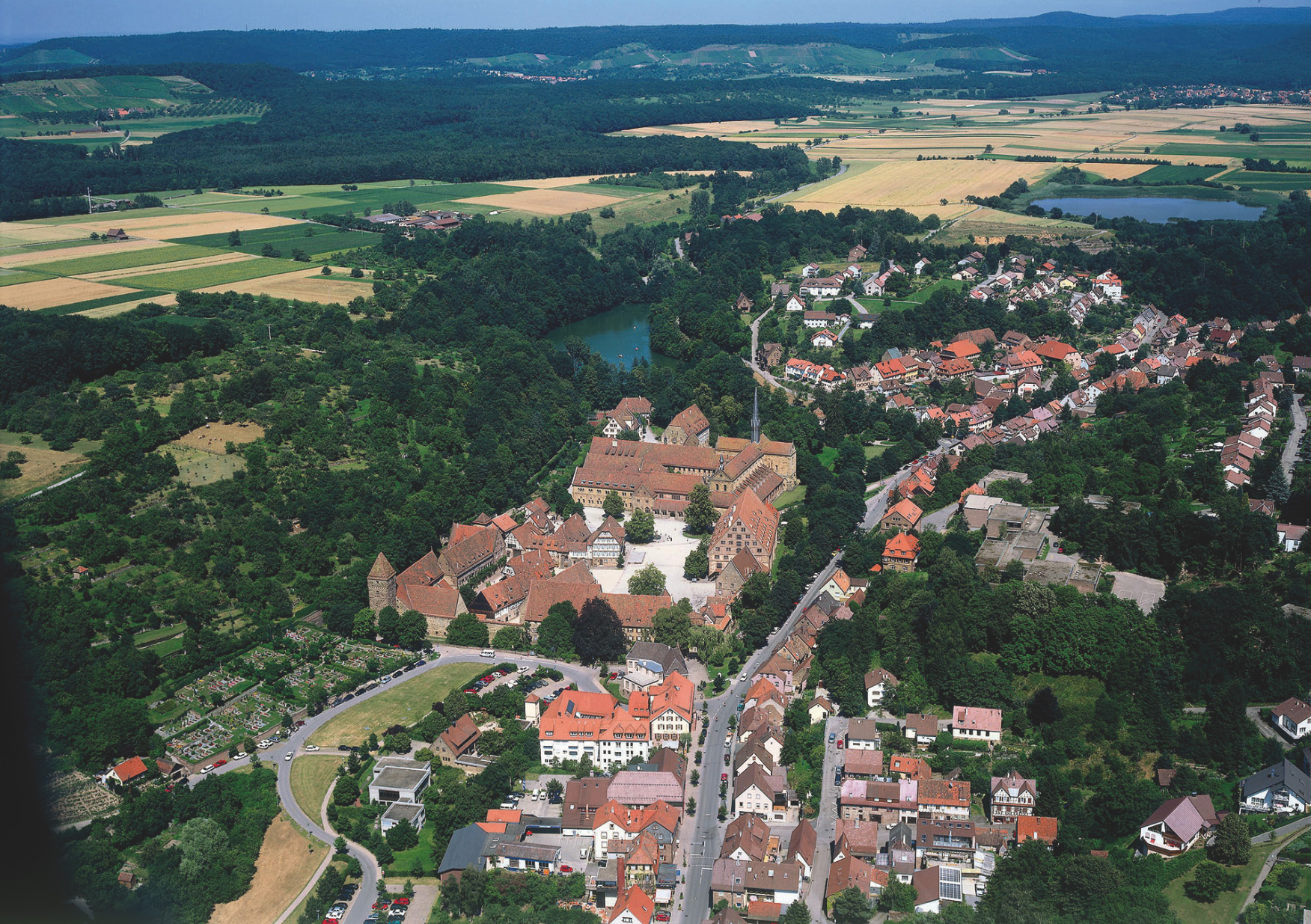
Maulbronn/Stromberg Monastery Landscape: “European Heritage Label for Cistercian Cultural Landscapes” ceremony and reception
Maulbronn Town Hall (former fruit cellar of Maulbronn Monastery)Ceremony and reception to mark the receipt of the European Heritage Label for Cistercian Cultural Landscapes "Cisterscapes connecting Europe" and the inauguration of the reconstruction of the Gothic wayside shrine in the Maulbronn Old Cemetery on Sunday, March 16, 2025, at 11 a.m. in the Maulbronn Town Hall (former fruit cellar of Maulbronn Monastery). Participation in the Cultural Heritage Label is another outstanding distinction of the UNESCO World Heritage Site Maulbronn Monastery and its cultural landscape developed by the former Cistercian monks . Maulbronn Monastery was situated between the Rhine, Neckar and Enz rivers and has left its lasting mark on numerous places and landscapes - in agriculture, viticulture, fruit growing and in the forests. The innovative hydraulic engineering and engineering skills of the Cistercians in the Middle Valley were outstanding. What was produced in the farmsteads and granges and collected in the Pfleghöfe was brought to market via the town courtyards. The former economy of the Cistercians in the region around Maulbronn can still be clearly seen today. Invitation_flyer_monastery_landscape_Maulbronn

